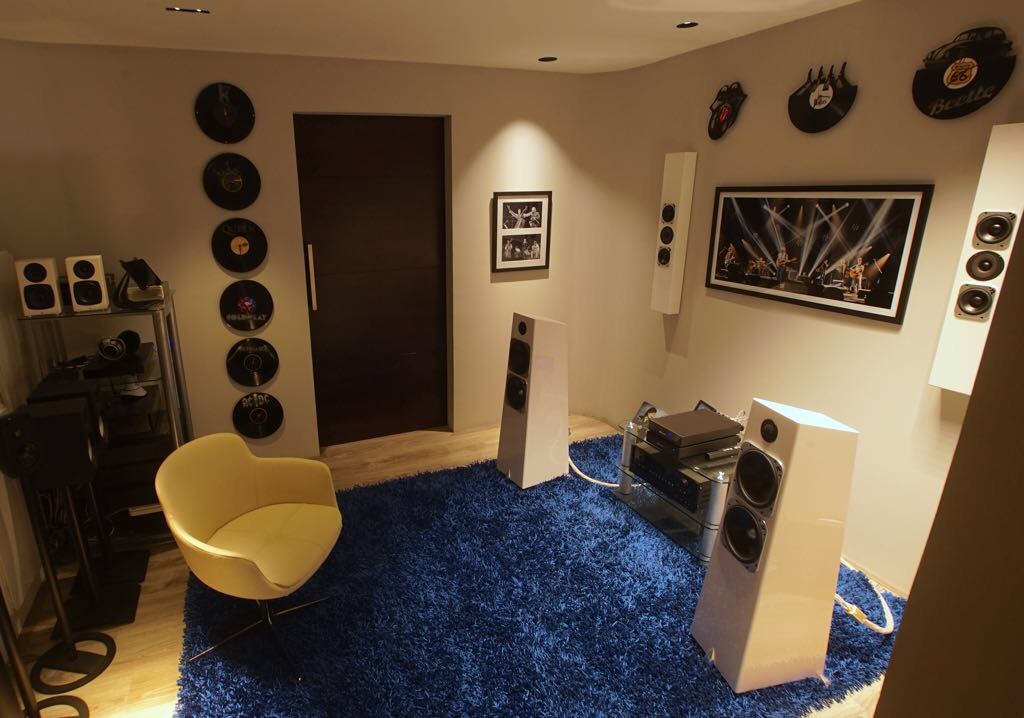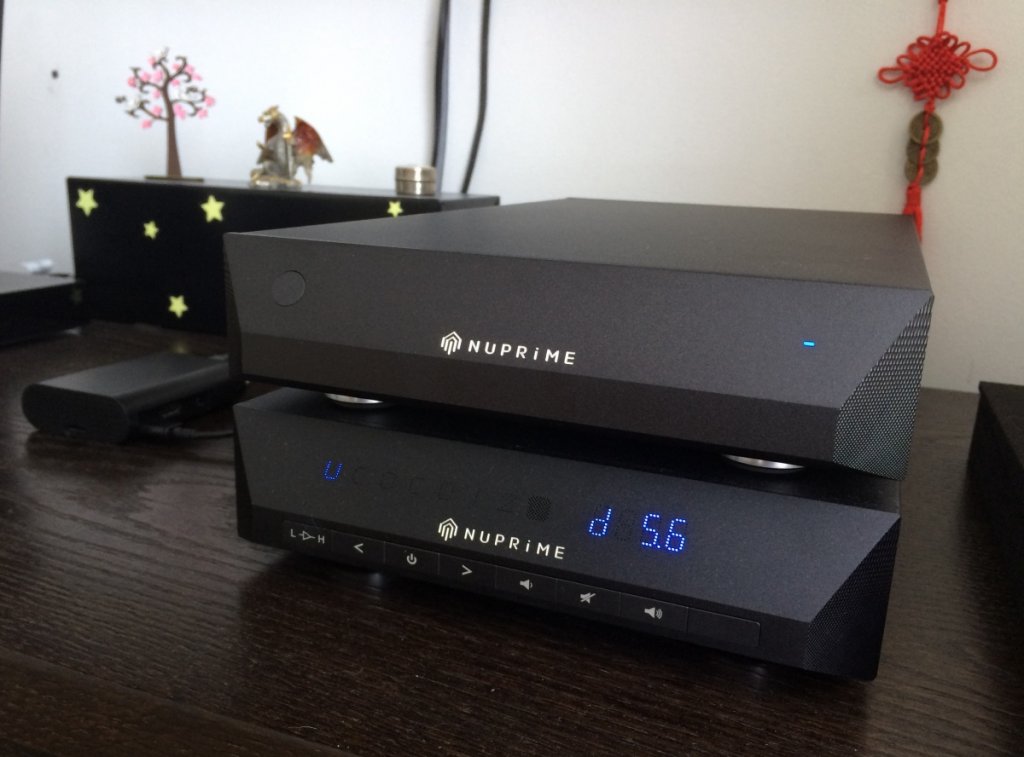How to choose your components (specially when you can’t audition them beforehand!)Part 3 of 4: Buying new DAC and AMP
The concept of “single point of failure” (SPOF), has never been so clear to me. After all the efforts and all the automation that was now available in our system, one single component failure got us from great music to complete silence in the blink of an eye! We were back to TV speakers.
So now we were on the market again for a way to make our digital sources create sound through our speakers. But this time something had changed: we already have had a taste of what it could sound like if done better.
The options were interesting: some very well regarded brands in the mainstream markets, others from smaller houses and less well known (or at least not universally known), but with raving reviews and fantastic user experiences documented in the online communities.
Perhaps it’s a good time to talk about online communities. I strongly believe that an article like this called “how to choose your components” may very well be a one-liner that read: “Find the best online communities and ask for advice”.
I did just that: started asking away… some questions went directly into brand-specific forums and others into general audio discussions trying to narrow down our choices. Local availability was an issue, but finding online people that have had hands-on experience with a particular item was much easier than finding local help.
What we faced was a two-front decision: which model / models to pick and, given our previous experience, if we were going to repeat the one-component-to-rule-them-all approach, or if we were going to separate their responsibilities.
The single DAC / AMP solution is very appealing: very small footprint, a lot easier to manage, less cable clutter. But you get this benefits sacrificing ultimate sound quality and less amplification power.
The local available options were, as discussed before:
- Basic Yamaha and Harman Kardon AV Receivers.
- Several Marantz AV Receivers and the option to import the Marantz HD-AMP1
- The entire NuPrime and Hegel lines
Unfortunately, the basic Yamaha and Harman Kardon receivers that were available locally only accepted speakers of 6Ω onwards. For the first time I regretted purchasing the 4Ω speakers. I knew they would require more niche equipment, but it was too soon after purchase to be having issues with the decision. Perhaps buying something with more standard specs like 8Ω speakers would have been a better decision? Time will tell. At any rate, this left the basic AV Receivers out of the race.
Having no way of auditioning the options side by side was a challenge. Furthermore, the Marantz equipment was only displayed on shelves, we could not audition them, not even in the store. The NuPrime and Hegel local distributor (Innovaciones Acusticas) on the other hand does have proper acoustic rooms where you can audition the NuPrime top of the line components. Still, the integrated amps were not available locally, and neither were any of the Hegel models.
Having the option to physically listen to a system adds a value I cannot praise enough. Buying equipment knowing you already enjoy their sound is much easier than taking a blind leap of faith into the unknown. Apparently local distributors don’t think this way. None except Innovaciones Acústicas. There we could get a clear feeling of what we would enjoy later on in our home. The experience was great!
 (Innovaciones Acústicas showroom, used with owner's permission)
(Innovaciones Acústicas showroom, used with owner's permission) This alone should have trumped all other options… that and knowing that the ‘NuPrime sound’ was something we already liked (having evolved from the NuForce line). We already knew this was the safer bet on our side. Still, there were strong contenders available.
I turned to the online community once more and, although with expected discrepancies amongst the posters, there was a general consensus that the Marantz equipment will produce less refined sound than those offered by NuPrime or Hegel.
Hegel enjoys a great fan base, and NuPrime has also a very devoted community that stands behind their products. This was a tougher decision and opinions were divided.
Hegel’s entry level integrated DAC / AMP, the H80, had all the right ingredients: it was more AMP oriented as it featured balanced inputs from external sources, yet included the DAC. The Röst model included streaming options which we had already covered in our system, but still it was a solid candidate (albeit more expensive).
NuPrime range was wider and the entry level IDA-6 lacked the USB-B input for our Linux Music Server, so we quickly ruled that one out. The IDA-8 on the other hand was a smaller, tighter enclosure when compared to the Hegel H80, much more appealing to the small space we have, but sacrificing a little in future-proof versatility. What versatility? The fact that, if and when DACs evolve, or there is a new format, we could still use the Hegel H80s balanced analog inputs. The NuPrime IDA-8 felt less up to the task because it digitizes its (only RCA) analog inputs. On the other hand, It was half the price of the Hegel.
Of course, these problems were not problems at all… our previous DDA-100 had even less versatility lacking any analog inputs, and we were OK with that. But I kept feeling that buying into the IDA-8 or H80 got us into the same problem of having a “single point of failure”. So my wife and I discussed these concerns and she asked a very simple question which I often miss when battling with so many options: “is there a solution to having everything in the same component?”... “yes, of course, we could buy two separate pieces, a DAC and an AMP”. She just smiled!
Perhaps I was debating myself so hardly because I already knew that that was (for me at least) the better route.
So entered the NuPrime STA-9 and DAC-9 into the mix. Right from the start, I felt more comfortable with what they offered. I turned to the online communities again because the reports of the ‘warmth’ that the STA-9 + DAC-9 combo are famous for worried me a bit. I usually prefer the sound to be really crisp and detailed, and I was unsure if that warmth would take away from those characteristics. The top-of-the-line NuPrime ST-10 and DAC-10 on the other hand were famous for being much more neutral, albeit considered too ‘clinical’ by some reviewers, who prefered the 9s.
This difference in preferences is a interesting concept that perhaps is less true for the bigger houses: a Yamaha entry-level receiver model X is probably inferior in every way to the higher-level model Y. In smaller more research-oriented companies like Hegel or NuPrime, where there is a lot of innovation between one product and the next one, you may end up with model X offering some characteristics and model Y offering others, not necessarily one always better than the other.
While this is great for the product line, it poses a challenge when deciding. Specially in places where you cannot benefit from trying both and just picking the one you prefer, or at least hearing them side by side.
In the end, there was no ‘wrong choice’. Every option was a little different, and since the debate hung between two products of the same company, I was able to access the full knowledge of the online community without fear of brand advertising or favoritism. In the end, due to local availability and online discussions, the ST-10 and DAC-10 combo won the battle.

It was the little details that made them more appealing: two optical inputs for the TV and AirPort Express (the DAC-9 only offered one), the option to have the ST-10 remotely started and stopped by the DAC-10 via a standard 3.5mm audio cable and the added bass extension. Also, the better handling of large orchestras of the ST-10. Finally, the inescapable truth that we were able to physically listen to the 10s and witness personally what they could do. It was a close call, but the 10s combo had the edge for us.
Also, being already available locally meant that instead of the usual one or two months waiting period, we could leave the store with both products the same day (and with a discount thanks to local stock clearance sale).
The addition of the ST-10 and DAC-10 to our system is nothing short of breathtaking! The sound is full, spacious, dynamic. All you could ask from a system. But lets backtrack a bit, as it took some time and further tweaking to reach to that level.
Starting System:
- (non functioning) NuForce DDA-100
- TV optically connected
- Apple AirPort Express optically connected
- Raspberry Pi3 USB connected
- Totem Rainmaker Speakers
Components added:
- NuPrime ST-10
- NuPrime DAC-10